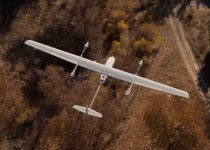6 surprising drone industry predictions for now through 2030
What are the fastest-growing aspects of the drone industry? It’s certainly not the consumer market, if news like Skydio shutting down its consumer division is any indication. But these surprising drone industry predictions shed light on a direction for the drone industry that is far unlike where it was trending 10 years ago.
According to the experts over at German-based drone analytics group Drone Industry Insights (DII), the drone industry still has plenty of room for growth, but some segments will grow much faster than others. That’s based on data collected via the Drone Market Report 2023, which is a 227-page drone market report that contains a 7-year forecast for the industry.
While you’ll have to pay to get your hands on the full report, DII shared some of its predictions for the drone industry between now through 2030 with The Drone Girl. Here are 6 of DII’s standout drone industry predictions.
1. The drone market is set to grow
The overall drone market, which includes both commercial and recreational, is set to grow to $54.6 billion by 2030. That breaks down to a compound average growth rate (CAGR) of 7.1%.
That’s slower than what earlier predictions had suggested. For example, while the drone industry is expected to be worth $38.6 billion by 2025 under DII’s estimates made in 2023, that’s less than the $42.8 billion that it predicted back in 2020 that the industry by 2025. And that’s even lower than predictions made pre-pandemic. In short, the industry is growing, just not as fast as we once thought.
2. While commercial growth will be huge, recreational growth will not (and may actually slow)
DII’s forecasts actually show the commercial side growing faster than 7.1%, with a projected CAGR of 7.7%.
On the other hand, DII predicts the recreational side will “essentially remain stagnant,” though it could actually slow, given a CAGR of -0.3%.
3. Asia will be the largest market for commercial drones
Most of the growth in drones will be concentrated in Asia, led by China. That includes a range of use cases. After all, the FlyCart 30 DJI delivery drone, just launched, but only in China. Meanwhile, India’s import bans have show signs of effectiveness at growing its own local drone manufacturing industry.
Other standout regions include the Middle East and Africa region. Those regions are also experiencing remarkable growth, outpacing other regions with a projected CAGR of 15.4%.
4. Drone delivery has a strong future, predictions show
Drone deliveries are set to grow at a global CAGR of 13.9%, outpacing the overall average growth predictions of 7.1%. That figure is specific to drone deliveries as an application method, say a retailer like Walmart doing drone deliveries.
And what are drones most likely to be delivering? DII predicts the sectors set to see the biggest impacts from drone deliveries include healthcare (e.g. vaccines and samples), emergency services (e.g. defibrillators and life vests), and logistics (e.g. packages and food).
And specific to cargo giants embracing drone deliveries, the potential for growth is even bigger. DII is predicting that the use of drones for ‘cargo, courier and warehousing,’ is set to grow at a rate of 15.7%. That’s driven by increasing demand for drone delivery and efficient inventory management from giants like Walmart, Amazon, UPS, and FedEx, as well as the hundreds of smaller drone companies worldwide that are revolutionizing logistics and supply chain operations by building up their drone delivery operations.
5. Most of the money is on the drone services side of things
DII splits the commercial drone market into three segments, which are:
- Hardware: Drone platform manufacturers, components, and systems manufacturers.
- Software: Companies building software for things like flight planning, navigation, data analytics, and fleet management.
- Services: Drone companies who provide services to other companies such as inspections, mapping, deliveries, or any other type of service.
Perhaps unsurprisingly, most of the money in drones will be on the services side of things, as is already the case today. In fact, already in 2023 services dominate with a staggering 80% of market activity.
For what it’s worth, hardware — albeit smaller — is projected to grow faster. According to DII’s predictions, the hardware side of drones will see an above average compound growth rate of 9.3%. Actual unit sales of commercial drones is expected to grow at a 9.2% CAGR.
6. The energy industry is a driving force for drones
While people like to talk abut drone deliveries as one of the top use cases for drones, it’s actually energy companies that are a driving force. Drones have proven enormously useful to energy companies to execute tasks such as inspections, monitoring, and maintenance across vital utilities such as oil and gas extraction and power generation (e.g. wind turbines, power lines).
“In these fields, drones provide unique advantages for inspecting chimneys, refineries, power lines, transmission towers, pipelines, and off-shore platforms,” according to DII’s report.
DII predicts the energy side of drones will grow from $4.66 billion today to be worth $7.43 billion by 2030.
As far as the way drones are actually being used though, it’s most specifically for mapping and surveying (and that’ whether it’s an industry like energy, or others like construction, mining and agriculture). Already today, the worldwide drone mapping and surveying market is worth $10 billion.






